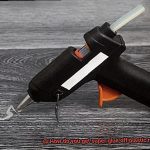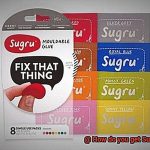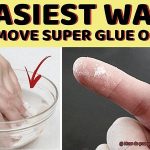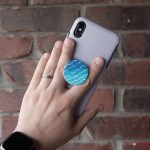We’ve all been there, dealing with the sticky aftermath of crazy glue on our skin. Trust me, I get it. It’s annoying and uncomfortable. But fear not, my friend. I’ve got your back with some simple yet effective methods to safely bid farewell to that stubborn adhesive.
In this blog post, I’ll share some insider tips that will help you tackle the glue without any harm to your precious skin. Remember, patience and gentle techniques are key here. So let’s dive into these remedies and get rid of that clingy glue once and for all.
Dip and Soak in Warm, Soapy Water:
Contents
- 0.1 Dip and Soak in Warm, Soapy Water:
- 0.2 Embrace Household Heroes: Oils.
- 0.3 Nail Polish Remover – Handle with Care:
- 0.4 Soften it Up with Petroleum Jelly or Vaseline:
- 0.5 Time for the Heavy Hitters: Commercial Adhesive Removers:
- 1 Common Problems with Crazy Glue on Skin
- 2 Soaking the Affected Area in Warm Soapy Water
- 3 Using Acetone-Based Nail Polish Remover
- 4 Alternative Methods (Rubbing Alcohol, Vinegar)
- 5 Avoiding Forceful Pulling or Scraping of Glue
- 6 Using Oil-Based Products (Baby Oil, Coconut Oil)
- 7 Washing Skin Thoroughly After Removal of Glue
- 8 Different Levels of Success Depending on Skin Type and Glue Used
- 9 Conclusion

Start by giving the affected area a good soak in warm, soapy water. Use a mild soap and gently rub the glue with your fingers or a soft cloth. Take your time and keep soaking and rubbing until the glue starts to loosen its grip.
Embrace Household Heroes: Oils.
You’ll be surprised at how household oils can come to your rescue. Grab some olive oil, coconut oil, or baby oil and apply a small amount onto the glued skin. Give it a gentle massage in circular motions, let it sit for a few minutes, then wipe away the glue with a soft cloth.
Nail Polish Remover – Handle with Care:
Nail polish remover containing acetone is another option you can try (but proceed with caution.). Apply a small amount onto a cotton ball or pad, then gently dab at the glue-covered skin. Just remember to wash the area thoroughly afterward to remove any residue.
Soften it Up with Petroleum Jelly or Vaseline:
Slather on some petroleum jelly or Vaseline onto the affected area for an easy way out of this sticky situation. Let it sit for a few minutes before gently massaging the area. Voila. The glue should start to peel away without any discomfort.
Time for the Heavy Hitters: Commercial Adhesive Removers:
If all else fails, it’s time to call in the big guns – commercial adhesive removers. Look for products specifically designed to loosen glue from skin and follow the instructions carefully to avoid any unwanted side effects or irritations.
Common Problems with Crazy Glue on Skin
Accidentally spilling or getting crazy glue on your skin can be an incredibly frustrating and uncomfortable experience. This fast-acting adhesive, also known as cyanoacrylate adhesive, bonds surfaces together quickly, and when it comes into contact with skin, it can cause a range of problems.
One of the primary issues with crazy glue on skin is the difficulty in removing it. The adhesive dries quickly, making immediate action necessary to prevent further bonding and potential damage to the skin. Trying to forcibly remove the glued skin can lead to injury or damage to the skin surface, so it’s important to know the proper techniques for removal.
Another common problem is that crazy glue can cause allergic reactions or skin irritations. Some people may be more sensitive to the adhesive and experience discomfort or pain when exposed to it for an extended period. Areas of the body where the skin is thin or sensitive, such as the fingers, eyelids, or lips, are particularly prone to these problems.
To safely remove crazy glue from the skin, there are several methods you can try. Here are a few:
- Soak the affected area in warm soapy water: This simple solution helps soften the glue and makes it easier to peel or scrape off.
- Use an acetone-based nail polish remover: Apply a small amount on a cotton ball or soft cloth and gently rub the glue until it starts to dissolve.
Try rubbing alcohol or vinegar: These substances can also help break down the adhesive.
Remember to be gentle when attempting to remove crazy glue from your skin to avoid causing further irritation or damage. Different methods may yield varying levels of success, as everyone’s skin and the type of crazy glue used may differ. If you experience any discomfort or irritation during the removal process, it’s advisable to seek professional medical advice.
Soaking the Affected Area in Warm Soapy Water
Crafting mishap? DIY disaster? Accidental encounter with crazy glue? We’ve all been there, frustrated and annoyed, wondering how to remove that stubborn adhesive from our skin. But fear not, my friends. There is a simple yet highly effective solution: soaking the affected area in warm soapy water.
Why does this method work like magic? Warm water acts as a powerful softening agent, breaking down the adhesive and making it easier to remove. And when you add soap to the mix, it becomes a superhero sidekick, intensifying the glue-breaking action and loosening its grip on your precious skin.
Here’s a step-by-step guide to this magical process:
Fill a basin or bowl with comfortably warm water. Avoid extreme temperatures to prevent burns or discomfort.
Add a few drops of mild dish soap or hand soap to the water, creating a soapy solution that will work wonders on that pesky glue.
Gently submerge the affected area in the warm soapy water. Ahh, can you feel the relief already? Allow it to soak for approximately 10-15 minutes, giving the glue ample time to loosen and dissolve.
While soaking, massage the area gently with your fingers or a soft cloth. This will expedite the process and bid farewell to that stubborn glue faster.
After your blissful soaking session, try peeling or rubbing off the softened glue with your fingers. If it doesn’t budge easily, don’t panic. Avoid forceful pulling or tugging, as this may harm your skin. Instead, continue soaking until the glue becomes more pliable and easier to remove.
Once you’ve successfully said goodbye to most of the glue, rinse the area with clean water to eliminate any soap residue. Voila. You’re left with clean, glue-free skin.
Remember, my friends, patience is key when it comes to removing crazy glue from your skin. Soaking in warm soapy water may require a few attempts before achieving desired results. And if all else fails, seek professional medical advice without hesitation.
Using Acetone-Based Nail Polish Remover
Step 1: Check the label, unleash the power:
Before embarking on your glue-removing mission, take a moment to inspect the label of your nail polish remover. Ensure that it contains acetone as the main ingredient. This potent solvent is what makes it so effective in breaking down the tenacious grip of crazy glue.
Step 2: Gather your arsenal:
Arm yourself with a cotton ball or pad, and of course, your trusty acetone-based nail polish remover. Having all your supplies ready will streamline the process and ensure a successful outcome.
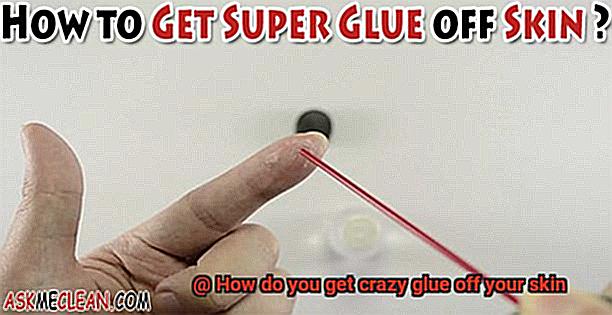
Step 3: Apply the magic potion:
Soak the cotton ball or pad with nail polish remover and gently dab it onto the area where the crazy glue has latched onto your skin. Allow it to sit for a few minutes, granting the acetone time to work its enchantment and dissolve the adhesive properties of the glue.
Step 4: Gentle rub, victorious triumph:
After a few minutes of anticipation, grab a clean cloth or paper towel and softly rub the area to remove the dissolved glue. Repeat this process if needed until every last trace of crazy glue has vanished, leaving behind only clean, unblemished skin.
Step 5: Moisturize, restore, rejuvenate:
Acetone can be drying to the skin, so it is vital to show your skin some love and moisturize the treated area afterward. Reach for your favorite lotion or moisturizer and lavish your skin with the care it deserves.
Bonus tip:
For those with sensitive or dry skin, it’s always wise to test a small area before applying acetone-based nail polish remover to a larger patch of skin. Safety should always come first.
Alternative Methods (Rubbing Alcohol, Vinegar)
When it comes to cleaning, sometimes alternative methods can be just as effective as commercial products. Two common household items that can be used for cleaning purposes are rubbing alcohol and vinegar. Let’s explore how these substances can be used as alternative methods for cleaning.
Rubbing alcohol, also known as isopropyl alcohol, is an excellent adhesive dissolver and is typically found in most households. To use rubbing alcohol, you’ll need a cotton ball or a soft cloth and some alcohol. Soak the cotton ball or cloth in the alcohol and gently dab it onto the surface you want to clean. The alcohol will start breaking down the dirt, grime, or adhesive, making it easier to wipe away. Repeat this process if necessary and finish by rinsing the area with water.
Vinegar is another versatile household item that can be used for cleaning various surfaces. It contains acetic acid, which helps break down dirt and grease. To use vinegar, dilute it with water in a spray bottle and spritz it onto the surface you want to clean. Wipe away the dirt or grime with a cloth or sponge. Vinegar is particularly effective for removing soap scum in bathrooms or cleaning windows and mirrors.
Aside from their cleaning abilities, both rubbing alcohol and vinegar have additional benefits. Rubbing alcohol has antiseptic properties, making it suitable for disinfecting surfaces. Vinegar, on the other hand, is known for its deodorizing properties and can help remove unpleasant odors from fabrics or rooms.
It’s important to note that while these alternative methods can be effective, they may not work as well on certain surfaces or stains. It’s always a good idea to test them on a small area first before applying them more extensively. Additionally, ensure proper ventilation when using these substances as their strong odors can be overpowering.
Avoiding Forceful Pulling or Scraping of Glue
We’ve all been there – whether it’s from a crafting mishap or an accidental spill. But let me tell you, before you resort to forcefully pulling or scraping at that glue, pause for a moment. It is crucial to understand the significance of avoiding these aggressive methods and to discover gentle and effective ways to remove glue from your skin.
Let’s delve into the perils of forceful pulling or scraping. When you apply force to remove glue, not only do you risk damaging your delicate skin, but you also subject yourself to unnecessary pain and discomfort. No one wants that, right? So, let’s explore some safer alternatives.
One highly effective method is soaking the affected area in warm soapy water. The warmth helps to loosen the glue while the soap breaks down its adhesive properties. It’s like a soothing spa treatment for your skin. Alternatively, if you prefer a more natural approach, try applying an oil-based product like olive oil or coconut oil to dissolve the glue. Imagine massaging these luxurious oils into your skin, allowing them to effortlessly disintegrate the stubborn adhesive.
Now, if the glue proves to be particularly obstinate, fret not. Acetone or nail polish remover can come to your rescue. However, exercise caution as these substances can be harsh on the skin. Always perform a patch test beforehand to avoid any adverse reactions. Another fantastic option is using adhesive removers specifically designed for removing glue from the skin. These specialized products are both gentle and effective, making them an ideal choice for resolving your sticky situation.
Now, as much as we all love our DIY endeavors, there are times when it’s best to seek professional assistance. If all else fails or if you experience any discomfort or irritation during the removal process, don’t hesitate to consult a healthcare professional. They possess the expertise to provide guidance and recommend appropriate solutions tailored to your specific situation.
Using Oil-Based Products (Baby Oil, Coconut Oil)
Using oil-based products like baby oil and coconut oil can be a game-changer when it comes to removing stubborn substances like crazy glue from the skin. These oils have a unique ability to break down the adhesive properties of the glue without causing harm to your skin.
To effectively use oil-based products for glue removal, start by applying a small amount of baby oil or coconut oil to the affected area. You don’t need much, just enough to cover the glue. Gently massage the oil into the glue, allowing it to penetrate and work its magic for a few minutes. This will help loosen the adhesive and make it easier to remove.
Once the oil has had a chance to work its magic, it’s time to peel or rub off the glue. Be patient and gentle during this process to avoid irritating or damaging your skin. If the glue doesn’t come off easily, you can repeat the process or try using a soft cloth or cotton pad soaked in oil to gently rub off the remaining residue.
After successfully removing the glue, it’s important to wash the area with mild soap and water to remove any oil residue. This step ensures that your skin is clean and free from any leftover adhesive or oils. Following up with a moisturizer is also recommended to keep your skin happy and hydrated.
While oil-based products like baby oil and coconut oil can be effective for most people, it’s important to note that they may not work for everyone or in all cases. If you have sensitive skin or any concerns, it’s always best to consult a healthcare professional before attempting any removal methods.
Washing Skin Thoroughly After Removal of Glue
Whether it’s from a DIY project gone wrong or an accidental spill, we’ve all experienced the frustration of dealing with stubborn glue residue. But here’s the secret to bidding farewell to that sticky mess – washing your skin thoroughly after removal of glue. Trust me, your skin will thank you.
Let’s break it down step by step:
- Step 1: Start with a gentle rinse. Warm water is your best friend here. Let it flow over the affected area, loosening any remaining glue and making it easier to remove. But remember, no scorching hot water. We want to pamper our skin, not torture it.
- Step 2: Time for some soap action. Choose a mild cleanser that’s gentle on sensitive skin. Lather it up and apply it to the area, using circular motions to massage it in. This will help break down any lingering glue particles and leave your skin feeling fresh and clean.
- Step 3: Rinse, rinse, rinse. Don’t forget to wash away all that soapy goodness (and any remaining glue) with another round of warm water. Give it a good splash and let the liquid magic do its thing.
- Step 4: Pat, don’t rub. After your washing extravaganza, grab a clean towel and gently pat your skin dry. Rubbing can cause irritation and nobody wants that.
- Step 5: Moisturize like there’s no tomorrow. Glue removal can be a bit harsh on our precious skin, so it deserves some extra love and hydration. Grab your favorite moisturizer and slather it on like you’re giving your skin a big ol’ hug. Your skin will thank you for it.
Now that we’ve covered the basics, let’s dive deeper into why washing your skin thoroughly after removing glue is so important.
Firstly, removing glue can leave behind residue that can clog pores and lead to breakouts. By washing your skin thoroughly, you ensure that all traces of glue are removed, preventing any potential skin issues.
Secondly, glue can contain harsh chemicals that can irritate and dry out the skin. Washing with a mild cleanser helps to remove these chemicals and restore the skin’s natural balance.
Additionally, washing your skin thoroughly after removing glue helps to prevent any allergic reactions. Some people may have sensitivities or allergies to certain types of glue, and thorough cleansing can minimize the risk of an adverse reaction.
Lastly, washing your skin thoroughly after removing glue is essential for maintaining good hygiene. Glue residue can attract dirt and bacteria, leading to infections or other skin problems. By washing away the glue, you ensure that your skin remains clean and healthy.
Different Levels of Success Depending on Skin Type and Glue Used
The success of this endeavor greatly depends on two crucial factors: your unique skin type and the specific glue used. Let’s dive into the depths of this sticky situation and explore the different levels of success you may encounter.
Firstly, we must acknowledge the diverse nature of our skin, as varied as the patterns on a fingerprint. This means that different approaches are required for different individuals. If you possess sensitive or delicate skin, caution should be exercised. Gentle methods are your allies here. Soaking the affected area in warm water and using a mild cleanser to break down the glue is a wise choice. Remember, patience is paramount. Hastiness can lead to unwanted irritation or damage.
On the other hand, if you boast tough or oily skin, prepare yourself for a battle. Stronger techniques might be necessary to conquer the glue’s tenacious grip. Consider employing solvents or removers specifically formulated to dissolve adhesive substances. But proceed with caution. Ensure that you select a solvent suitable for your skin type and meticulously follow the instructions provided.
Ah, the adhesive strength of the glue itself. This aspect cannot be overlooked. Some crazy glues possess an iron-like hold that can transform removal into a true challenge. When selecting your removal method, take into account the specific properties of the glue you’re facing. The path to success lies in understanding your opponent.
But wait. Nature’s remedies have their moments to shine as well. Oils such as olive oil, coconut oil, or baby oil can work wonders in breaking down crazy glue’s grip. These gentle options generally pose less risk to most skin types and can serve as splendid alternatives when commercial solvents fail to entice.
In conclusion, my dear comrades in glue warfare, remember that patience and caution should forever accompany you on this journey. Take your time, handle with care, and avoid employing excessive force in order to prevent any uninvited skin irritations or injuries.
RS3ZwDi8oUE” >
Also Read: How To Remove Glue From Hands?
Conclusion
Removing crazy glue from your skin may seem like an impossible task, but fear not. There are some tried and true methods that can save the day in no time. Soaking the affected area in warm soapy water is one such option that works wonders. Picture yourself luxuriating in a soothing bath while the adhesive loosens its grip on your skin, making it easier than ever to peel off. Another technique involves using an acetone-based nail polish remover – yes, you heard right. Just imagine delicately dabbing a cotton ball soaked in this magical elixir onto the stubborn glue until it starts dissolving before your very eyes.
But what if you find yourself without any nail polish remover? Fear not, my friend. You still have options up your sleeve. Rubbing alcohol or even humble olive oil can come to your rescue as alternative solutions with their own unique powers. They possess properties that can break down the glue, leaving you free from its sticky clutches. It’s essential to exercise patience during this delicate process and resist the temptation to forcefully yank at the glue. Treat it like a gentle dance, taking your time to coax it off naturally.
However, if all else fails and you find yourself in a sticky situation, don’t hesitate to seek professional assistance. A dermatologist or healthcare provider can provide expert guidance on how to safely bid adieu to crazy glue on your skin.


